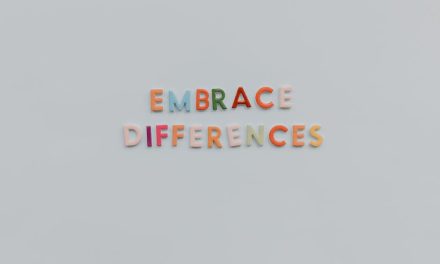Table of Contents
- Introduction
- Decoding Workplace Jargon: A Guide to Understanding Common Buzzwords
- Unraveling the Meaning Behind Workplace Catchphrases: A Closer Look at Common Buzzwords
- Navigating the Language of the Office: Key Workplace Buzzwords Explained
- Demystifying Workplace Terminology: Understanding and Using Common Buzzwords
- Q&A
- Conclusion
“Unlocking the Language of the Modern Workplace”
Introduction
Understanding Common Workplace Buzzwords
In today’s fast-paced and ever-evolving work environment, it is essential to stay up-to-date with the latest trends and terminologies. Workplace buzzwords have become a common language used by professionals across various industries. These buzzwords often emerge as a result of technological advancements, changing work dynamics, and evolving business strategies. Having a good understanding of these buzzwords can help individuals effectively communicate and navigate the modern workplace. In this article, we will explore some of the most common workplace buzzwords and their meanings, providing you with a comprehensive overview of the terminology frequently encountered in professional settings.
Decoding Workplace Jargon: A Guide to Understanding Common Buzzwords

Understanding Common Workplace Buzzwords
In today’s fast-paced and ever-evolving work environment, it’s not uncommon to hear a variety of buzzwords and jargon being thrown around. From “synergy” to “disruptive innovation,” these terms can often leave employees feeling confused and out of the loop. However, understanding and using these buzzwords can be crucial for effective communication and collaboration in the workplace. In this article, we will decode some of the most common workplace buzzwords and provide a guide to help you navigate through them.
One of the most frequently used buzzwords in the workplace is “synergy.” This term refers to the idea of individuals or teams working together to achieve a common goal. It emphasizes the importance of collaboration and cooperation, highlighting the belief that the whole is greater than the sum of its parts. When someone mentions “synergy,” they are likely emphasizing the need for teamwork and the benefits that can be achieved through collective effort.
Another buzzword that often pops up in workplace conversations is “disruptive innovation.” This term refers to the introduction of new ideas or technologies that significantly alter the way business is conducted. It emphasizes the need for organizations to constantly adapt and evolve in order to stay competitive in the market. When someone talks about “disruptive innovation,” they are likely referring to the importance of embracing change and seeking out new opportunities for growth.
“Work-life balance” is another buzzword that has gained popularity in recent years. This term refers to the idea of finding a healthy equilibrium between one’s professional and personal life. It emphasizes the importance of maintaining mental and physical well-being while also being productive at work. When someone mentions “work-life balance,” they are likely highlighting the need for individuals to prioritize self-care and avoid burnout.
Moving on, “transparency” is a buzzword that is often used in discussions about organizational culture. This term refers to the practice of openly sharing information and being honest and accountable in all aspects of work. It emphasizes the importance of trust and integrity within a company. When someone talks about “transparency,” they are likely emphasizing the need for open communication and a culture of honesty and trust.
Another buzzword that is frequently used in the workplace is “agile.” This term refers to a flexible and adaptive approach to work, often associated with project management and software development. It emphasizes the need for quick decision-making, continuous improvement, and the ability to respond to changing circumstances. When someone mentions “agile,” they are likely highlighting the importance of being adaptable and responsive in a fast-paced environment.
Lastly, “thought leadership” is a buzzword that is often used in discussions about personal branding and professional development. This term refers to individuals who are recognized as experts in their field and are seen as influential thinkers and innovators. It emphasizes the importance of sharing knowledge and insights to establish oneself as a trusted authority. When someone talks about “thought leadership,” they are likely highlighting the need for individuals to position themselves as experts and contribute to the industry’s collective knowledge.
In conclusion, understanding and using workplace buzzwords can be essential for effective communication and collaboration in today’s work environment. From “synergy” to “thought leadership,” these terms provide a common language that helps convey complex ideas and concepts. By decoding these buzzwords and familiarizing yourself with their meanings, you can navigate through workplace conversations with confidence and contribute to a more productive and collaborative work environment.
Unraveling the Meaning Behind Workplace Catchphrases: A Closer Look at Common Buzzwords
Understanding Common Workplace Buzzwords
In today’s fast-paced and ever-evolving work environment, it’s not uncommon to hear a variety of buzzwords being thrown around. From “synergy” to “disruptive innovation,” these catchphrases have become an integral part of workplace communication. However, understanding the true meaning behind these buzzwords can sometimes be a challenge. In this article, we will take a closer look at some of the most common workplace buzzwords and unravel their true meaning.
One of the most frequently used buzzwords in the workplace is “synergy.” This term refers to the idea of collaboration and teamwork, where the combined efforts of individuals result in a greater outcome than what could be achieved individually. Synergy emphasizes the importance of working together and leveraging each other’s strengths to achieve common goals. It is often used to promote a sense of unity and cooperation within a team or organization.
Another buzzword that has gained popularity in recent years is “disruptive innovation.” Coined by Harvard Business School professor Clayton Christensen, this term refers to the process of introducing new ideas or technologies that fundamentally change the way business is conducted. Disruptive innovation often involves challenging traditional methods and finding new ways to solve problems. It is often associated with startups and entrepreneurial ventures that aim to revolutionize industries.
“Work-life balance” is another buzzword that has become increasingly important in today’s society. With the rise of technology and the ability to work remotely, achieving a healthy balance between work and personal life has become a top priority for many individuals. This buzzword emphasizes the need to prioritize self-care and well-being, ensuring that work does not consume all aspects of one’s life. Employers are encouraged to create a supportive environment that allows employees to maintain a healthy work-life balance.
“Empowerment” is a buzzword that focuses on giving individuals the authority and autonomy to make decisions and take ownership of their work. It emphasizes the importance of trust and confidence in employees’ abilities, allowing them to contribute their unique perspectives and ideas. Empowerment is often associated with increased job satisfaction and productivity, as individuals feel valued and motivated to excel in their roles.
“Transparency” is a buzzword that emphasizes openness and honesty in communication. It involves sharing information, both positive and negative, in a clear and timely manner. Transparency is often seen as a key factor in building trust within an organization and fostering a culture of accountability. It encourages open dialogue and ensures that everyone is on the same page, working towards common goals.
Lastly, “agile” is a buzzword that has gained popularity in the context of project management and software development. It refers to a flexible and iterative approach to work, where teams adapt and respond quickly to changing circumstances. Agile methodologies prioritize collaboration, continuous improvement, and delivering value to customers. It is often associated with increased efficiency and faster time-to-market.
In conclusion, workplace buzzwords have become an integral part of modern-day communication. Understanding their true meaning is essential for effective workplace interactions. From synergy to disruptive innovation, work-life balance to empowerment, transparency to agility, these buzzwords reflect important concepts and values in today’s work environment. By unraveling their meaning, individuals can better navigate the ever-changing landscape of the workplace and contribute to their organizations’ success.
Navigating the Language of the Office: Key Workplace Buzzwords Explained
Understanding Common Workplace Buzzwords
In today’s fast-paced and ever-evolving work environment, it’s essential to stay up-to-date with the latest trends and terminology. Workplace buzzwords have become a common language in offices around the world, and understanding them is crucial for effective communication and collaboration. This article aims to shed light on some of the most frequently used workplace buzzwords and provide a clear understanding of their meanings.
One of the most prevalent buzzwords in the workplace is “synergy.” This term refers to the idea of individuals or teams working together to achieve a common goal. It emphasizes the importance of collaboration and cooperation, highlighting the belief that the whole is greater than the sum of its parts. When colleagues talk about “synergizing,” they are emphasizing the need to combine their skills and expertise to produce better results.
Another buzzword that often pops up in office conversations is “disruptive innovation.” This term refers to the introduction of new ideas, products, or services that significantly alter the existing market or industry. Disruptive innovation challenges the status quo and often leads to the creation of entirely new markets. Companies that embrace disruptive innovation are often at the forefront of their industries, constantly pushing boundaries and finding new ways to meet customer needs.
“Work-life balance” is a buzzword that has gained significant attention in recent years. It refers to the idea of finding a healthy equilibrium between one’s professional and personal life. Achieving work-life balance is essential for overall well-being and productivity. It involves setting boundaries, managing time effectively, and prioritizing self-care. Employers who prioritize work-life balance often see higher employee satisfaction and retention rates.
“Agile” is a buzzword commonly used in project management and software development. It refers to an iterative and flexible approach to work, where teams adapt and respond to changes quickly. Agile methodologies focus on collaboration, continuous improvement, and delivering value to customers. By embracing agility, organizations can respond more effectively to changing market demands and deliver high-quality products or services.
“Empowerment” is a buzzword that emphasizes giving individuals the authority and autonomy to make decisions and take ownership of their work. Empowered employees are trusted to make informed choices and are given the resources and support they need to succeed. Empowerment fosters a sense of ownership and accountability, leading to increased motivation and productivity.
“Transparency” is a buzzword that emphasizes openness and honesty in the workplace. Transparent organizations share information freely, ensuring that employees have access to relevant data and insights. Transparent communication builds trust and fosters a culture of collaboration and accountability. It enables employees to make informed decisions and align their actions with the organization’s goals.
Lastly, “growth mindset” is a buzzword that emphasizes the belief that abilities and intelligence can be developed through dedication and hard work. Individuals with a growth mindset embrace challenges, persist in the face of setbacks, and see failure as an opportunity for learning and growth. Cultivating a growth mindset in the workplace encourages innovation, resilience, and continuous improvement.
In conclusion, workplace buzzwords have become an integral part of office conversations, reflecting the ever-changing nature of the modern work environment. Understanding these buzzwords is essential for effective communication and collaboration. By familiarizing ourselves with the meanings behind these terms, we can navigate the language of the office with confidence and contribute to a more productive and harmonious workplace.
Demystifying Workplace Terminology: Understanding and Using Common Buzzwords
Understanding Common Workplace Buzzwords
In today’s fast-paced and ever-evolving work environment, it’s essential to stay up-to-date with the latest workplace terminology. Buzzwords have become a common part of our professional vocabulary, but understanding their meaning and usage can sometimes be a challenge. In this article, we will demystify some of the most common workplace buzzwords, providing you with a better understanding of their significance and how to use them effectively.
One of the most frequently used buzzwords in the workplace is “synergy.” Synergy refers to the collaboration and cooperation between individuals or teams that results in a combined effort greater than the sum of its parts. It emphasizes the importance of working together towards a common goal, leveraging each other’s strengths, and maximizing productivity. When using this buzzword, it’s crucial to provide concrete examples of how synergy has been achieved in your workplace, highlighting the positive outcomes it has generated.
Another buzzword that often pops up in professional conversations is “disruptive innovation.” This term refers to the introduction of new ideas, products, or services that significantly alter the existing market landscape. Disruptive innovation challenges traditional approaches and forces organizations to adapt and evolve. When discussing disruptive innovation, it’s important to provide examples of how your company has embraced this concept and the positive impact it has had on your industry.
“Work-life balance” is a buzzword that has gained significant attention in recent years. It refers to the equilibrium between one’s personal and professional life, ensuring that neither aspect dominates at the expense of the other. Achieving work-life balance is crucial for employee well-being and productivity. When discussing work-life balance, it’s important to emphasize the importance of flexible work arrangements, such as remote work or flexible hours, and how they contribute to a healthier work environment.
“Agile” is another buzzword that has become increasingly popular in the workplace. It refers to a project management methodology that emphasizes adaptability, collaboration, and iterative development. Agile teams work in short sprints, continuously delivering value and responding to changing requirements. When discussing agility, it’s important to highlight the benefits of this approach, such as increased efficiency, faster time to market, and improved customer satisfaction.
“Empowerment” is a buzzword that focuses on giving individuals the authority and autonomy to make decisions and take ownership of their work. Empowered employees are more engaged, motivated, and innovative. When discussing empowerment, it’s important to highlight the importance of trust, clear communication, and providing opportunities for growth and development.
Lastly, “diversity and inclusion” is a buzzword that has gained significant attention in recent years. It refers to creating a workplace that values and respects individuals from different backgrounds, cultures, and perspectives. Diversity and inclusion are not only ethical imperatives but also drive innovation and creativity. When discussing diversity and inclusion, it’s important to emphasize the benefits it brings to the organization, such as improved decision-making, increased employee engagement, and a broader customer base.
In conclusion, understanding and effectively using workplace buzzwords is essential in today’s professional environment. By demystifying these common terms, such as synergy, disruptive innovation, work-life balance, agile, empowerment, and diversity and inclusion, we can better communicate and collaborate with our colleagues. Remember to provide concrete examples and highlight the positive outcomes associated with these buzzwords. By doing so, we can create a more productive and inclusive workplace that embraces innovation and values its employees.
Q&A
1. What is the meaning of the buzzword “synergy” in the workplace?
Synergy refers to the combined effort of individuals or teams working together to achieve a greater outcome than what could be achieved individually.
2. What does the term “work-life balance” mean in the workplace?
Work-life balance refers to the equilibrium between an individual’s professional responsibilities and personal life, ensuring that both aspects are given adequate attention and time.
3. What is the definition of “agile” in the workplace context?
Agile refers to a flexible and adaptive approach to work, where teams can quickly respond to changes, collaborate effectively, and deliver high-quality results in a fast-paced environment.
4. What does the buzzword “transparency” mean in the workplace?
Transparency refers to open and honest communication, sharing information, and making decisions in a clear and accessible manner, fostering trust and accountability among employees.
Conclusion
Understanding common workplace buzzwords is essential for effective communication and collaboration in a professional setting. These buzzwords often serve as shorthand for complex concepts or trends, allowing colleagues to quickly convey ideas and stay up to date with industry developments. By familiarizing oneself with these buzzwords, individuals can enhance their professional vocabulary and better navigate the ever-evolving landscape of the modern workplace.




